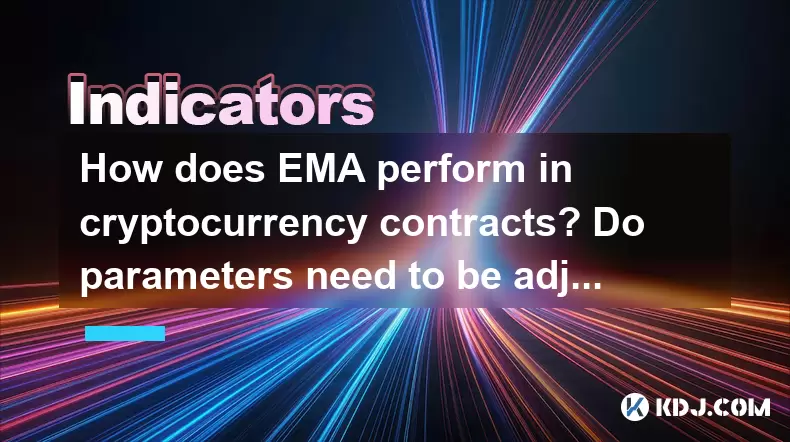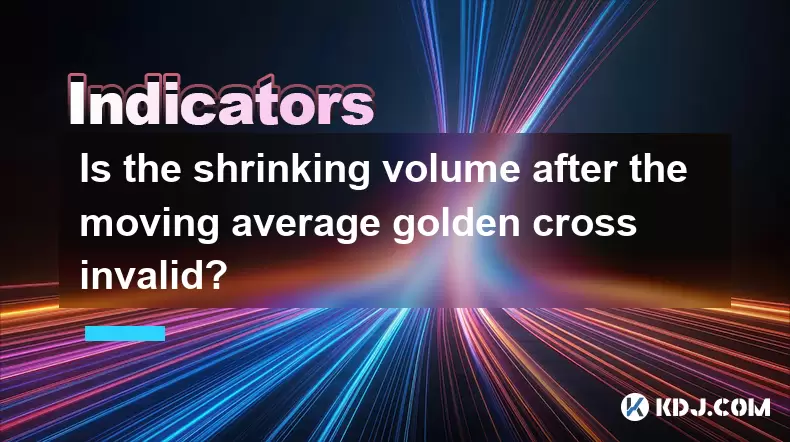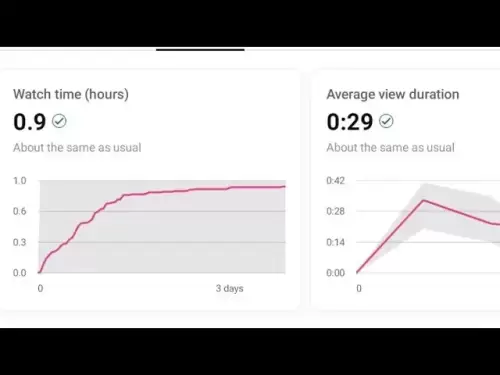-
 Bitcoin
Bitcoin $102,838.3669
-0.64% -
 Ethereum
Ethereum $2,288.9548
-5.70% -
 Tether USDt
Tether USDt $1.0003
0.01% -
 XRP
XRP $2.0782
-2.11% -
 BNB
BNB $632.3292
-1.65% -
 Solana
Solana $136.1959
-2.98% -
 USDC
USDC $1.0000
0.01% -
 TRON
TRON $0.2726
-0.11% -
 Dogecoin
Dogecoin $0.1566
-4.06% -
 Cardano
Cardano $0.5552
-5.18% -
 Hyperliquid
Hyperliquid $34.2720
-1.05% -
 Bitcoin Cash
Bitcoin Cash $466.8638
-1.20% -
 Sui
Sui $2.5776
-5.75% -
 UNUS SED LEO
UNUS SED LEO $8.9685
0.02% -
 Chainlink
Chainlink $12.0304
-5.11% -
 Stellar
Stellar $0.2375
-2.47% -
 Avalanche
Avalanche $16.9243
-3.74% -
 Toncoin
Toncoin $2.8539
-2.82% -
 Shiba Inu
Shiba Inu $0.0...01091
-4.04% -
 Litecoin
Litecoin $81.4197
-2.58% -
 Hedera
Hedera $0.1374
-5.25% -
 Monero
Monero $310.1410
-1.30% -
 Ethena USDe
Ethena USDe $1.0006
0.01% -
 Dai
Dai $1.0000
0.00% -
 Polkadot
Polkadot $3.2843
-5.48% -
 Bitget Token
Bitget Token $4.2110
-1.76% -
 Uniswap
Uniswap $6.4977
-7.96% -
 Pepe
Pepe $0.0...09321
-7.31% -
 Pi
Pi $0.5074
-6.27% -
 Aave
Aave $234.8342
-5.61%
How does EMA perform in cryptocurrency contracts? Do parameters need to be adjusted when leverage is high?
EMA is a key tool in crypto trading, helping identify trends and entry/exit points, but needs careful parameter adjustment when using high leverage.
May 27, 2025 at 11:42 pm

The Exponential Moving Average (EMA) is a widely used technical indicator in the cryptocurrency trading world, especially within the realm of cryptocurrency contracts. The EMA helps traders identify trends and potential entry or exit points by smoothing out price data over a specified period. In this article, we will explore how the EMA performs in cryptocurrency contracts and whether its parameters need adjustment when trading with high leverage.
Understanding EMA in Cryptocurrency Contracts
The Exponential Moving Average (EMA) is calculated by applying more weight to recent prices, which makes it more responsive to new information compared to the Simple Moving Average (SMA). In cryptocurrency contracts, traders often use EMAs to gauge the direction of the market and to make informed trading decisions. The formula for calculating the EMA is as follows:
[ EMA{today} = (Price{today} \times \frac{2}{N+1}) + (EMA_{yesterday} \times (1 - \frac{2}{N+1})) ]
Where ( N ) is the number of periods used in the calculation.
In the context of cryptocurrency contracts, EMAs can be particularly useful due to the volatile nature of these markets. Traders often use multiple EMAs, such as the 9-day, 21-day, and 50-day EMAs, to identify short-term and long-term trends. For instance, a common strategy involves looking at the crossover of a short-term EMA (like the 9-day EMA) over a longer-term EMA (like the 21-day EMA) as a signal to enter a trade.
Performance of EMA in Cryptocurrency Contracts
The performance of the EMA in cryptocurrency contracts can vary based on market conditions and the specific cryptocurrency being traded. In bullish markets, the EMA can help traders identify upward trends and potential buying opportunities. Conversely, in bearish markets, the EMA can signal downward trends and potential selling points.
One of the key advantages of using the EMA in cryptocurrency contracts is its ability to react quickly to price changes. This is particularly beneficial in the fast-paced world of cryptocurrency trading, where prices can fluctuate significantly in a short period. For example, if Bitcoin's price suddenly spikes, the EMA will adjust more rapidly than the SMA, providing traders with timely signals.
However, the EMA is not without its limitations. False signals can occur, especially in highly volatile markets, where sudden price movements can lead to whipsaws. Traders must be cautious and use additional indicators or analysis methods to confirm EMA signals before making trading decisions.
Adjusting EMA Parameters with High Leverage
When trading cryptocurrency contracts with high leverage, it is crucial to consider whether the EMA parameters need to be adjusted. High leverage can amplify both gains and losses, making it essential to use reliable indicators to manage risk effectively.
The choice of EMA period can significantly impact its performance when trading with high leverage. Shorter EMA periods, such as the 9-day or 12-day EMA, are more sensitive to price changes and can provide more timely signals. However, these shorter periods also increase the risk of false signals, which can be particularly dangerous with high leverage.
On the other hand, longer EMA periods, such as the 50-day or 200-day EMA, are less sensitive to price fluctuations and can provide more stable signals. These longer periods may be more suitable for traders using high leverage, as they can help filter out short-term volatility and reduce the risk of false signals.
Practical Example of EMA Usage in High Leverage Trading
To illustrate how EMA parameters might be adjusted when trading with high leverage, let's consider a practical example. Suppose a trader is using a 10x leverage to trade Bitcoin futures. The trader decides to use the 9-day and 21-day EMAs to identify potential entry and exit points.
- Step 1: The trader opens a trading platform that supports cryptocurrency contracts and sets up the chart to display the 9-day and 21-day EMAs.
- Step 2: The trader monitors the chart for a bullish crossover, where the 9-day EMA crosses above the 21-day EMA. This signal suggests a potential buying opportunity.
- Step 3: Before entering the trade, the trader checks additional indicators, such as the Relative Strength Index (RSI) or the Moving Average Convergence Divergence (MACD), to confirm the bullish signal.
- Step 4: If the additional indicators confirm the bullish signal, the trader enters a long position on the Bitcoin futures contract with 10x leverage.
- Step 5: The trader sets stop-loss and take-profit levels to manage risk effectively, considering the high leverage used.
- Step 6: The trader continues to monitor the EMAs and other indicators to decide when to exit the trade. A bearish crossover, where the 9-day EMA crosses below the 21-day EMA, could signal a potential exit point.
In this example, the trader uses the 9-day and 21-day EMAs to identify short-term trends while trading with high leverage. However, the trader also uses additional indicators to confirm signals and manages risk carefully due to the amplified impact of leverage.
EMA and Risk Management in High Leverage Trading
Risk management is crucial when trading cryptocurrency contracts with high leverage. While the EMA can provide valuable signals, it is essential to use it in conjunction with other risk management tools. Here are some key considerations:
- Position Sizing: Adjust the size of the position based on the level of leverage and the trader's risk tolerance. Smaller positions can help mitigate the impact of potential losses.
- Stop-Loss Orders: Use stop-loss orders to limit potential losses. The placement of stop-loss orders should consider the volatility of the cryptocurrency and the sensitivity of the chosen EMA periods.
- Take-Profit Levels: Set take-profit levels to lock in gains. These levels should be based on the trader's analysis of the market and the signals provided by the EMA and other indicators.
- Diversification: Consider diversifying across different cryptocurrencies and trading strategies to spread risk. This can help mitigate the impact of a single trade going against the trader.
By combining the EMA with effective risk management practices, traders can use this indicator more confidently when trading with high leverage.
EMA in Different Market Conditions
The performance of the EMA can vary depending on the specific market conditions within the cryptocurrency contracts market. In trending markets, the EMA can be particularly effective at identifying the direction of the trend and potential entry or exit points. For example, in a strong uptrend, the EMA can help traders stay in the trade longer and capitalize on the upward movement.
In ranging markets, where prices move sideways, the EMA may generate more false signals. Traders should be cautious and use additional indicators to confirm EMA signals in these conditions. For instance, combining the EMA with the Bollinger Bands can help identify potential breakouts or breakdowns in a ranging market.
In volatile markets, the EMA can be both a blessing and a curse. Its responsiveness to price changes can provide timely signals, but it can also lead to whipsaws. Traders should consider using longer EMA periods or combining the EMA with other volatility indicators, such as the Average True Range (ATR), to manage risk effectively.
Frequently Asked Questions
Q1: Can the EMA be used effectively in all types of cryptocurrency contracts?
A1: The EMA can be used effectively in various types of cryptocurrency contracts, including futures, options, and perpetual swaps. However, its effectiveness depends on the specific market conditions and the trader's strategy. In highly volatile markets, such as those for altcoins, the EMA may need to be used in conjunction with other indicators to manage risk effectively.
Q2: How often should the EMA parameters be adjusted when trading with high leverage?
A2: The frequency of adjusting EMA parameters when trading with high leverage depends on the trader's strategy and the market conditions. Some traders may adjust the EMA periods daily based on short-term market trends, while others may use a more static approach and adjust the parameters less frequently. It is essential to monitor the performance of the chosen EMA periods and make adjustments as needed to optimize trading results.
Q3: Are there any alternative indicators that can be used in conjunction with the EMA for high leverage trading?
A3: Yes, there are several alternative indicators that can be used in conjunction with the EMA for high leverage trading. Some popular options include the Relative Strength Index (RSI), the Moving Average Convergence Divergence (MACD), and the Bollinger Bands. These indicators can help confirm EMA signals and provide additional insights into market trends and potential trading opportunities.
Q4: How can traders avoid false signals when using the EMA in cryptocurrency contracts?
A4: To avoid false signals when using the EMA in cryptocurrency contracts, traders can take several steps. First, they should use multiple EMAs with different periods to confirm signals. For example, a bullish crossover of the 9-day EMA over the 21-day EMA could be confirmed by a similar crossover of the 21-day EMA over the 50-day EMA. Additionally, traders should use other indicators, such as the RSI or the MACD, to validate EMA signals. Finally, practicing good risk management, such as using stop-loss orders and appropriate position sizing, can help mitigate the impact of false signals.
Disclaimer:info@kdj.com
The information provided is not trading advice. kdj.com does not assume any responsibility for any investments made based on the information provided in this article. Cryptocurrencies are highly volatile and it is highly recommended that you invest with caution after thorough research!
If you believe that the content used on this website infringes your copyright, please contact us immediately (info@kdj.com) and we will delete it promptly.
- Bitcoin in Europe: France's Budding Romance with BTC
- 2025-06-22 12:45:12
- BNB Chain Altcoin Meltdown: Navigating the Storm and Spotting Opportunities
- 2025-06-22 12:45:12
- Inherited Riches: Rare Coin Collection Valued at £6,000 – Is Your Change Worth a Fortune?
- 2025-06-22 12:25:12
- Fiat-Backed Stablecoins, Tokenized Treasuries, and DeFi: A New York Minute on the Future of Finance
- 2025-06-22 12:25:12
- Pumpfun Token Launch Faces Crypto Backlash: A Billion-Dollar Gamble?
- 2025-06-22 12:50:12
- Pepe Coin Price Prediction: Crash Risk and What's Next for Frog-Themed Crypto
- 2025-06-22 13:05:13
Related knowledge

Does the second surge in the RSI overbought zone induce more?
Jun 22,2025 at 08:35am
Understanding the RSI Overbought ZoneThe Relative Strength Index (RSI) is a momentum oscillator commonly used in technical analysis to measure the speed and change of price movements. It ranges from 0 to 100, with values above 70 typically considered overbought and values below 30 considered oversold. When the RSI enters the overbought zone for the firs...

Does the sudden contraction of ATR indicate the end of the trend?
Jun 20,2025 at 11:14pm
Understanding ATR and Its Role in Technical AnalysisThe Average True Range (ATR) is a technical indicator used to measure market volatility. Developed by J. Welles Wilder, ATR calculates the average range of price movement over a specified period, typically 14 periods. It does not indicate direction—only volatility. Traders use ATR to gauge how much an ...

Is it invalid if the DMI crosses but the ADX does not expand?
Jun 21,2025 at 09:35am
Understanding the DMI and ADX RelationshipIn technical analysis, the Directional Movement Index (DMI) consists of two lines: +DI (Positive Directional Indicator) and -DI (Negative Directional Indicator). These indicators are used to determine the direction of a trend. When +DI crosses above -DI, it is often interpreted as a bullish signal, while the opp...

How to filter false signals when the SAR indicator frequently flips?
Jun 21,2025 at 08:43pm
Understanding the SAR Indicator and Its BehaviorThe SAR (Stop and Reverse) indicator is a popular technical analysis tool used in cryptocurrency trading to identify potential reversals in price movement. It appears as a series of dots placed either above or below the price chart, signaling bullish or bearish trends. When the dots are below the price, it...

Is the trend continuation when the Williams indicator is oversold but there is no rebound?
Jun 20,2025 at 11:42pm
Understanding the Williams %R IndicatorThe Williams %R indicator, also known as the Williams Percent Range, is a momentum oscillator used in technical analysis to identify overbought and oversold levels in price movements. It typically ranges from 0 to -100, where values above -20 are considered overbought and values below -80 are considered oversold. T...

Is the shrinking volume after the moving average golden cross invalid?
Jun 22,2025 at 10:42am
Understanding the Moving Average Golden Cross in CryptocurrencyIn the world of cryptocurrency trading, technical indicators play a crucial role in decision-making. One such indicator is the moving average golden cross, which occurs when a short-term moving average crosses above a long-term moving average, typically signaling a bullish trend. This event ...

Does the second surge in the RSI overbought zone induce more?
Jun 22,2025 at 08:35am
Understanding the RSI Overbought ZoneThe Relative Strength Index (RSI) is a momentum oscillator commonly used in technical analysis to measure the speed and change of price movements. It ranges from 0 to 100, with values above 70 typically considered overbought and values below 30 considered oversold. When the RSI enters the overbought zone for the firs...

Does the sudden contraction of ATR indicate the end of the trend?
Jun 20,2025 at 11:14pm
Understanding ATR and Its Role in Technical AnalysisThe Average True Range (ATR) is a technical indicator used to measure market volatility. Developed by J. Welles Wilder, ATR calculates the average range of price movement over a specified period, typically 14 periods. It does not indicate direction—only volatility. Traders use ATR to gauge how much an ...

Is it invalid if the DMI crosses but the ADX does not expand?
Jun 21,2025 at 09:35am
Understanding the DMI and ADX RelationshipIn technical analysis, the Directional Movement Index (DMI) consists of two lines: +DI (Positive Directional Indicator) and -DI (Negative Directional Indicator). These indicators are used to determine the direction of a trend. When +DI crosses above -DI, it is often interpreted as a bullish signal, while the opp...

How to filter false signals when the SAR indicator frequently flips?
Jun 21,2025 at 08:43pm
Understanding the SAR Indicator and Its BehaviorThe SAR (Stop and Reverse) indicator is a popular technical analysis tool used in cryptocurrency trading to identify potential reversals in price movement. It appears as a series of dots placed either above or below the price chart, signaling bullish or bearish trends. When the dots are below the price, it...

Is the trend continuation when the Williams indicator is oversold but there is no rebound?
Jun 20,2025 at 11:42pm
Understanding the Williams %R IndicatorThe Williams %R indicator, also known as the Williams Percent Range, is a momentum oscillator used in technical analysis to identify overbought and oversold levels in price movements. It typically ranges from 0 to -100, where values above -20 are considered overbought and values below -80 are considered oversold. T...

Is the shrinking volume after the moving average golden cross invalid?
Jun 22,2025 at 10:42am
Understanding the Moving Average Golden Cross in CryptocurrencyIn the world of cryptocurrency trading, technical indicators play a crucial role in decision-making. One such indicator is the moving average golden cross, which occurs when a short-term moving average crosses above a long-term moving average, typically signaling a bullish trend. This event ...
See all articles
























































































